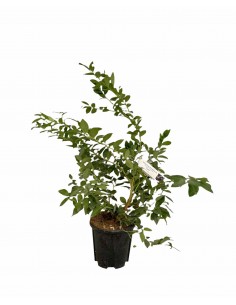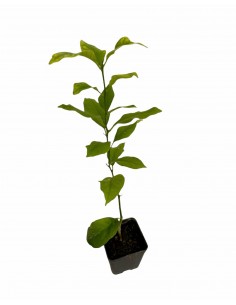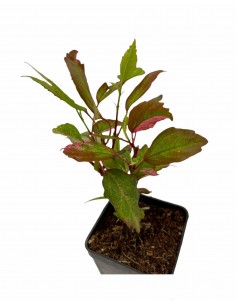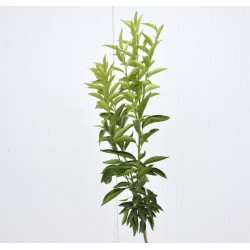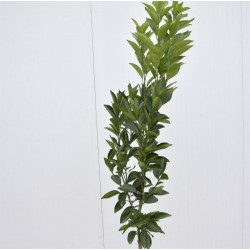Microcitrus papuana tree
Generalities Microcitrus papuana tree:
Microcitrus papuana is a citrus fruit native to Papua New Guinea that naturally lives in the transition zone between the eucalyptus forest and the tropical forest, at a height of 37 meters above sea level. It has thin, light green leaves that release a citric odor when crushed. The axillary flowers are cream colored in the bud phase and appear solitary. The cylindrical fruit, slightly curved, is usually 5-8 cm long with a diameter of 1-1.3 cm; when fully ripe it is yellow / green in color (it should be remembered that the color can vary according to the cultivation area, as happens for Microcitrus of Australian origin). The scent of ripe fruit is reminiscent of lime.
- jar 22cm, height 150/170cm
Generality:
Papuana (Microcitrus papuana) is a very rare citrus fruit, native to Papua New Guinea. In nature, this species grows in the transition zone between the savannah and the rainforest. Small tree with a very compact habit, it is characterized by 2-3 cm long and narrow leaves. and slightly pubescent. The fruit is cylindrical, slightly curved, 5-8 cm long. and 1- 2 cm in width and changes from green to intense yellow when ripening is complete. The pulp is made up of many single, translucent, juicy and crunchy vesicles that resemble caviar in both size and texture. When you bite into the pulp, the vesicles almost burst in your mouth, releasing their distinctive sour taste. The taste is typical of citrus fruits and is a pleasant mix between the taste of lemon and that of grapefruit. It has good drought resistance and prefers sunny and well-drained soilsi.
cultivation and care:
Papuan plants (Microcitrus papuana) need to be repaired or withdrawn indoors in the winter months;
- give them a position sheltered from strong winds, but not from light breezes;
- make sure they have at least 4 or 5 hours of sunshine a day;
- provide balanced and specific fertilizations;
- prune and repot them regularly.
Citrus fruits in pots should be watered regularly and frequently in the summer, as soon as the earth becomes dry, while watering should be thinned out in the winter.





